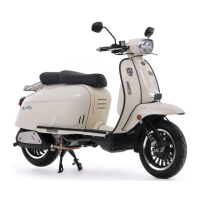What to do if my Royal Alloy Motorcycle engine is stalling?
- DdakotafarmerJul 27, 2025
If your Royal Alloy Motorcycle engine is stalling, you should: * Check the fuel supply in the fuel tank. * Check the engine idle speed. * Check the ignition system for intermittent spark.

